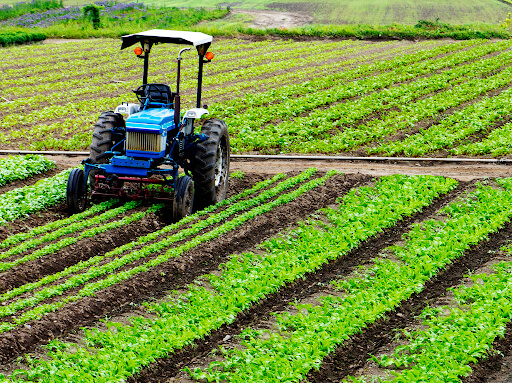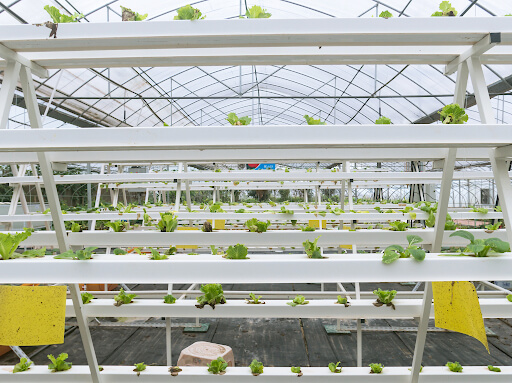 1-800-805-5783
1-800-805-5783 
Agricultural dynamics underwent drastic changes over the last decade. With agricultural Land becoming a critical resource daily, dependence on man-run machines for large-scale and small-scale farming alone is becoming less productive.
With the advancement in the tertiary sector, the availability of farming labor and expertise in rural areas is becoming a bottleneck in agriculture’s profits and productivity. Like any other field, AI-driven agriculture is the most viable solution for many farming-based problems. AI technologies are rendering smart solutions for agriculture in the areas of:
According to the Academia report
A 30% increase in crop yield has been noted in Andhra Pradesh, India, in farms adapted to Microsoft-driven AI technologies for Agriculture.
According to the United Nations Food and Agriculture Estimate, the world’s agricultural yield has to increase by 70% by 2050 to cater to the population at that time with the current agricultural land holdings. After Agriculture 4.0, agricultural practices have been enhanced with Automated unmanned decision-making systems (agricultural robotics), Big Data, and AI.
AI now offers a wide range of smart solutions for enhancing Agricultural output easily, provided farmers can overcome social and educational barriers.
Computer Vision Technology:-
What is computer vision technology?
Any machine fitted with a camera and a computer programmed to see, record, process data, and investigate is said to be a machine with “ computer vision technology.” This does the dual work of observing and analyzing data by a human eye with precision. This technology reduces errors due to dependence on human assessment as it processes previous data to arrive at conclusions. Hence, when this technology is adapted to agricultural practices, farmers can benefit by yielding more with high efficiency and low costs. The future of agriculture will be solely based on technologies combining Computer Vision Technology with deep learning technologies, which will cause massive agricultural disruption.
Some practical applications for smart AI solutions in agriculture using Computer Vision technology:-
Nutrients peasant in the soil define the quality and usability of a particular soil for the growth of a specific crop type. This is also, to a large extent, the deciding factor for crop yield productivity. UAV drones will be used to take images of the soil and the crop (after sowing), and intelligent computer vision models will be used to interpret these images so crop yield predictions can be made and crop health can be monitored and corrected as and when required.

Removing weeds manually or through herbicides is a big challenge in any crop management system. Computer vision technology can solve the problem of identifying weeds by intelligently processing crop monitoring images. Suppose these intelligent algorithms are substantiated with machine learning tools to develop a robot that can de-weed automatically. In that case, it saves a lot of manual intervention, time, and cost with precision. It also reduces dependence on unhealthy herbicides. This type of agriculture gives true meaning to organic farming.
According to the V7 report, an Agricultural Robot for de-weeding named the BoniRob has a camera-aided computer. This removes weeds by bolting the robotic arm into the earth.
Use of Intelligent Sensor Techniques in Agriculture
This technology is a smart AI solution for limited-resource farming with minimum human effort. This kind of technology is rapidly gaining momentum in the ‘Aeroponics’ type of agriculture.
What is aeroponics?
This is a modern agricultural technology in which the entire crop cycle is controlled by a well-monitored system where quantities of desired nutrient mists are sprayed on crops that do not require soil for growth and development. Nutrients control the entire crop cycle, and the controlling parameters are temperature, PH, water-nutrient levels, light intensity, amount of CO2 required, Automated time interval, etc.

Intelligent Sensors or wireless sensors fitted into this agricultural system will greatly help in early fault detection and correction. This enables the farmer to monitor and control the farming parameters remotely without delay. The Hindawi Journal of Sensors did an excellent review of the Aeroponics farming system using intelligent sensors.
Machine learning in agriculture with 5G IoT
The next generation of smart agricultural technology will be smart farming using IoT with the aid of cloud computing over a futuristic 5G network. This will solve the problem of “ how to develop a completely human-independent, secured, efficient, cost-effective farming system that is environmentally friendly?” This type of smart farming will make the entire crop cycle, from planting to harvesting, completely automatic with the help of remote monitoring. According to the Science Direct abstract, a survey was conducted on the impacts of the 5G network on agriculture.
Conclusion
The advent of Disruptive technologies in agriculture, like the AI agricultural and Farming technologies, is changing the very meaning of Agriculture. Agricultural practices of the last decade are rapidly being replaced with smart farming methods like aquaponics, permaculture, hydroponics, etc., aided by smart AI tools.
Tags: agriculture, AI